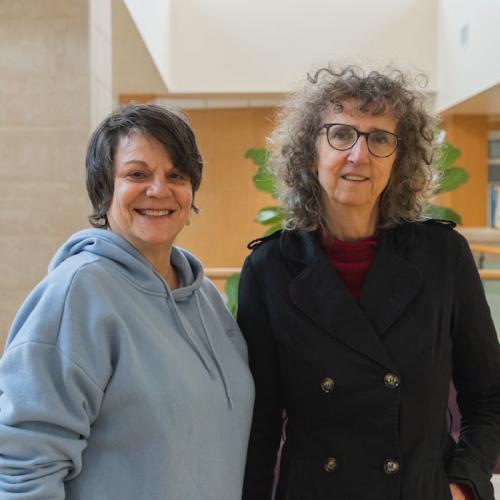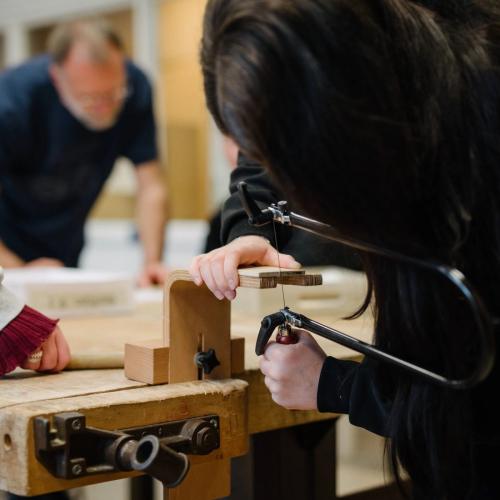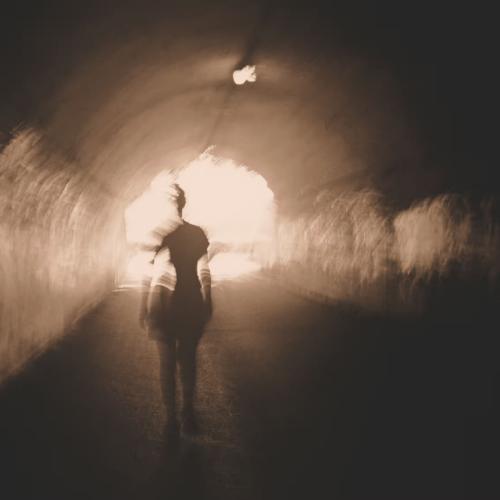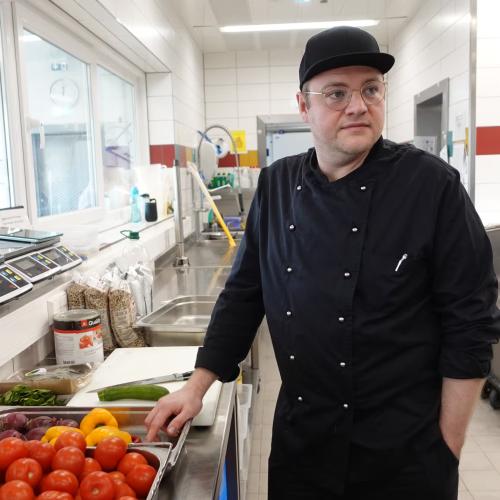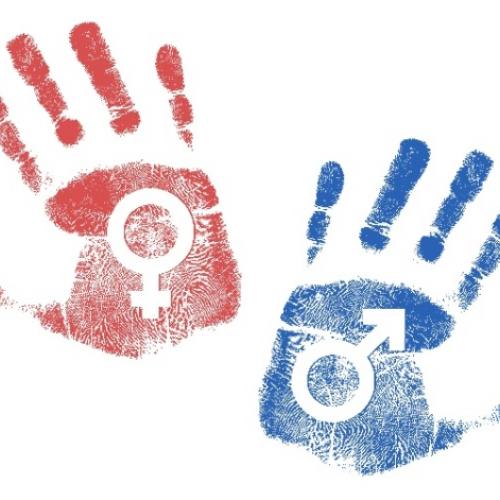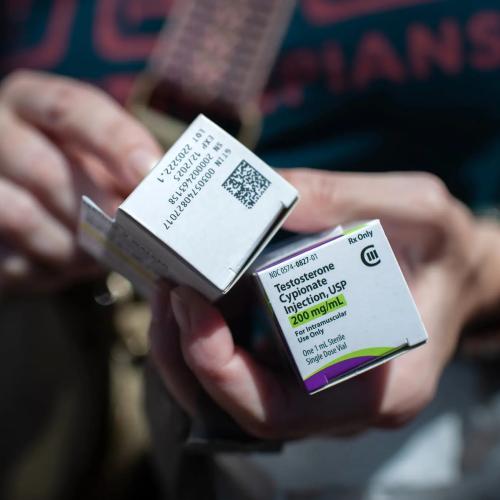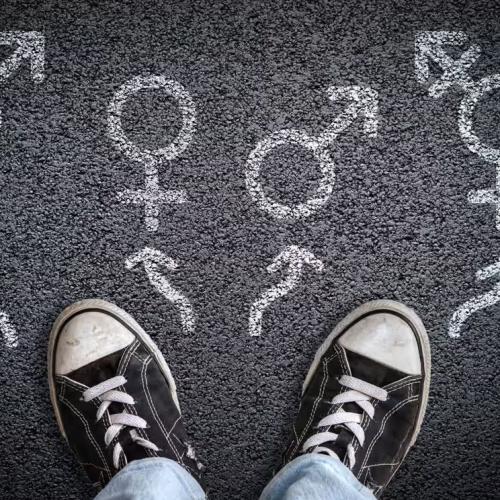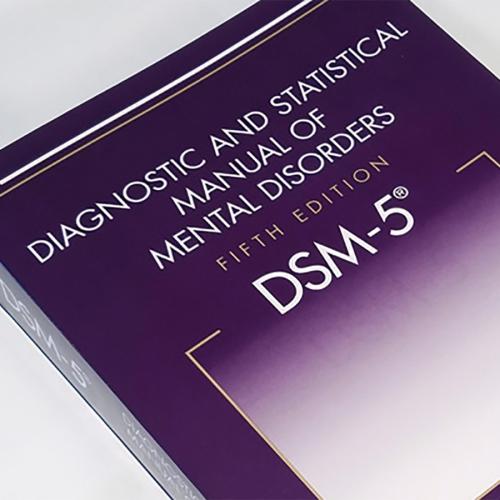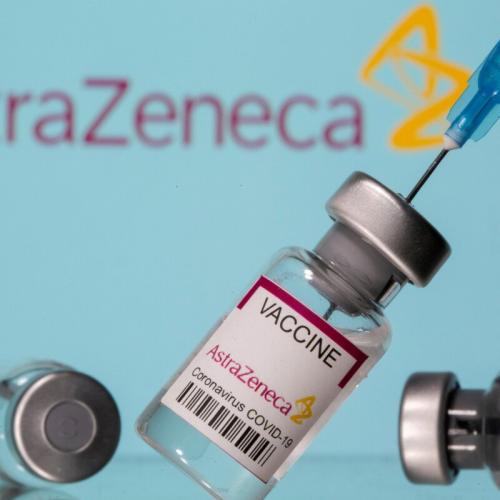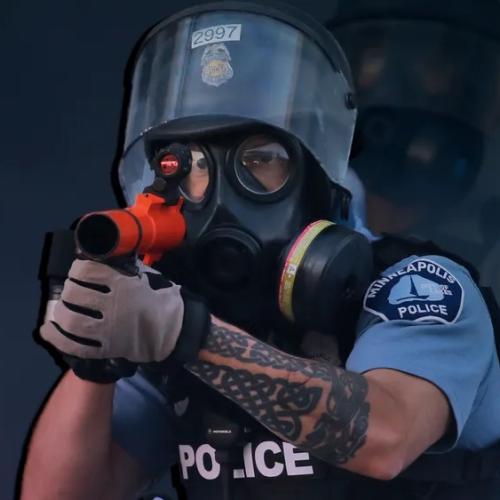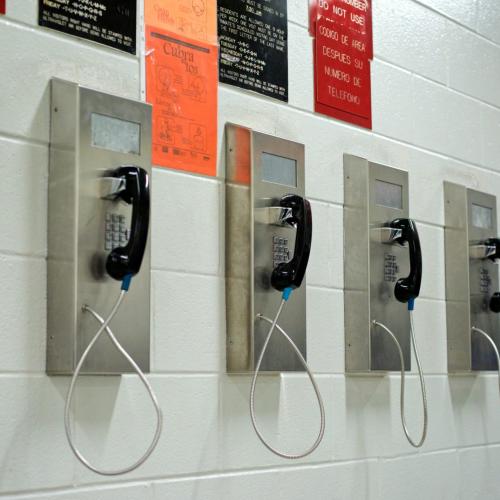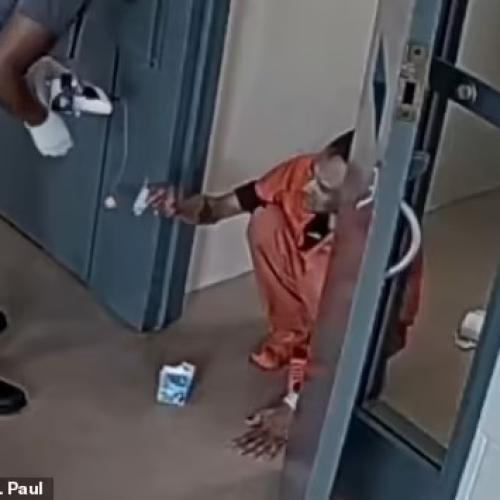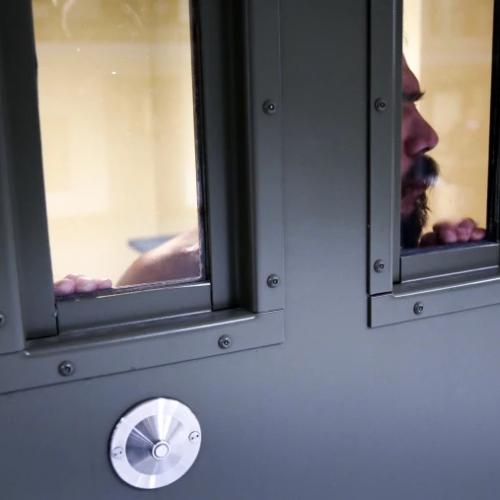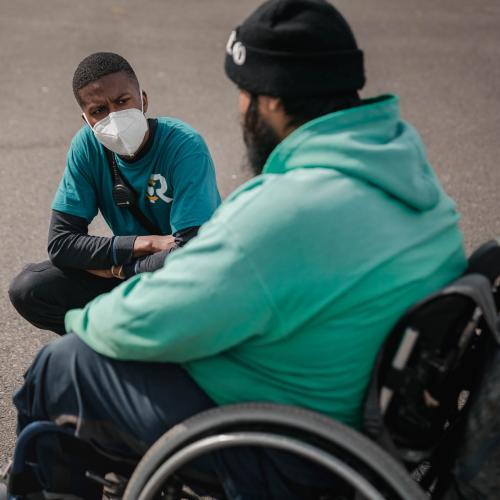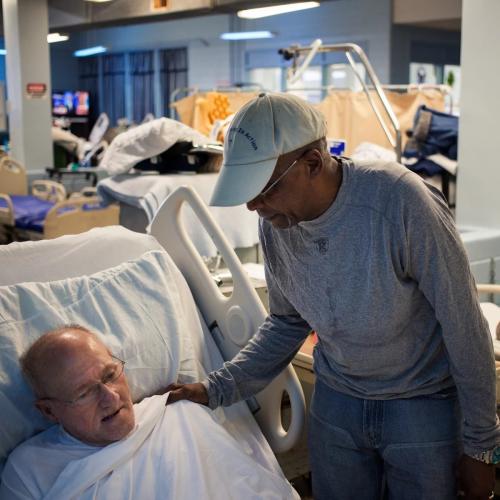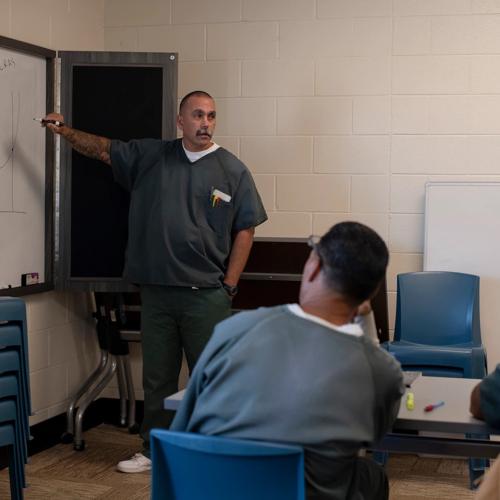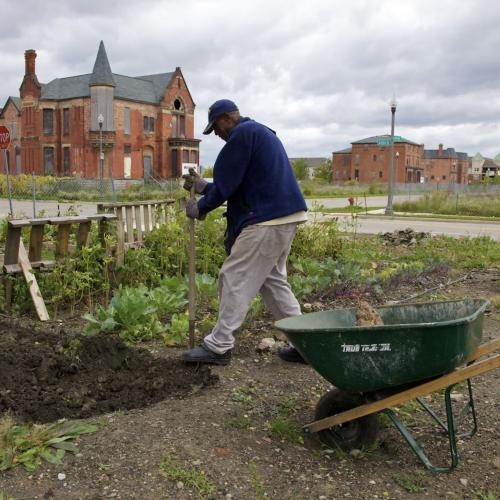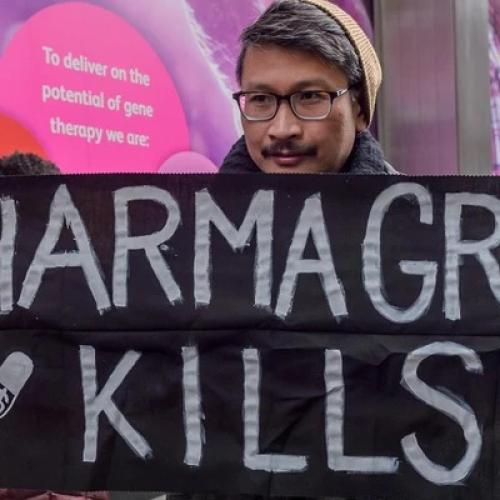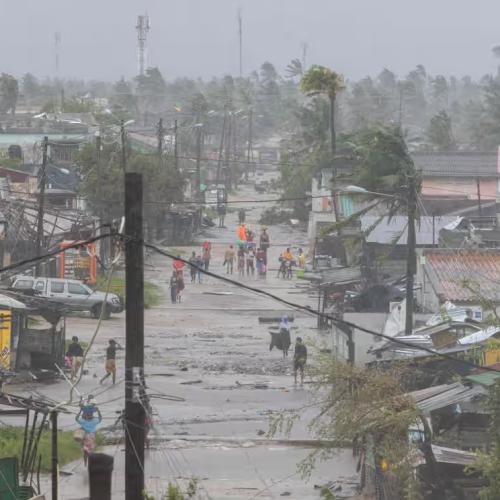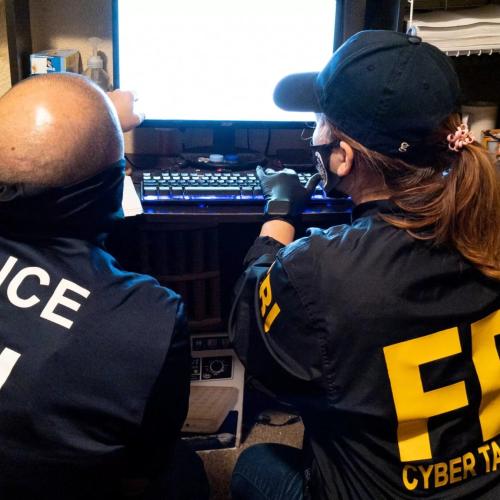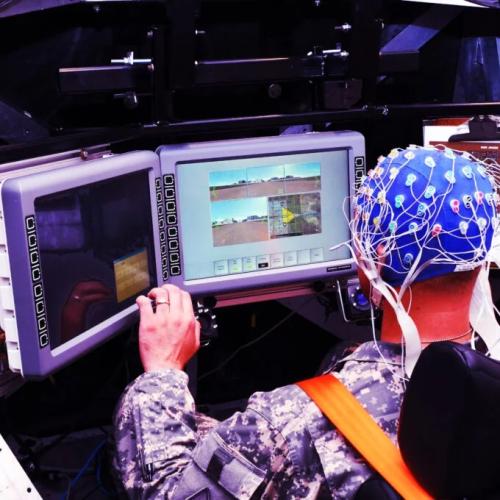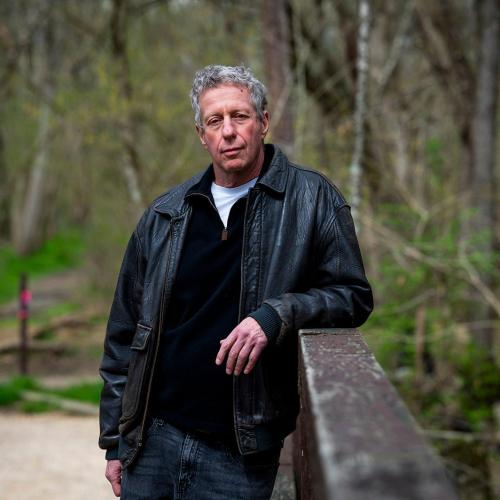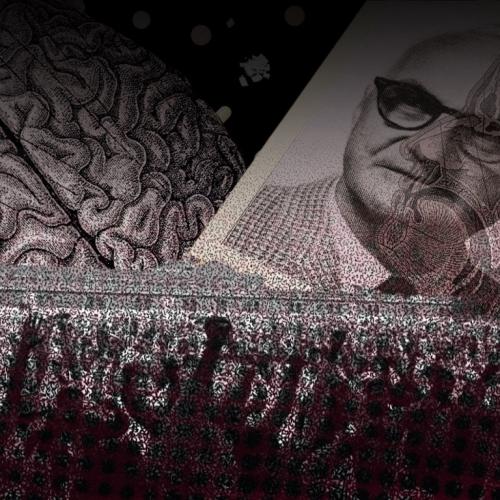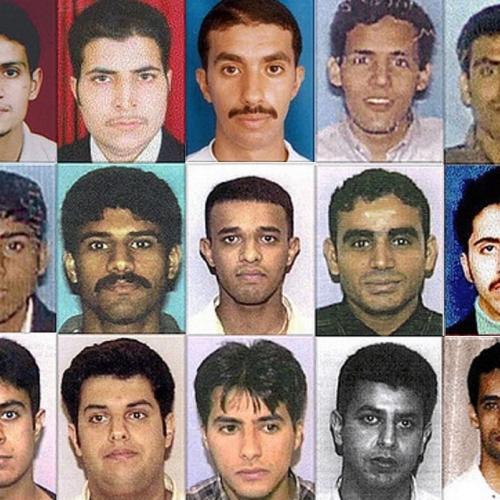Inspiring: Repairing Our Criminal Justice System News Stories
Below are key excerpts of inspiring news articles on repairing our criminal justice system from reliable news media sources. If any link fails to function, a paywall blocks full access, or the article is no longer available, try these digital tools.
For further exploration, delve into our Inspiration Center.
People experiencing mental or behavioral health crises and addiction have often been subject to police use of force, arrest and incarceration. [There are] efforts around the country to change that. One of the most common new approaches ... are civilian co-responder programs, in which behavioral health specialists, often social workers, show up to certain emergency calls alongside police. These can include situations like suicide threats, drug overdoses, and psychiatric episodes. Typically, the officers on the team have special training in crisis intervention. Generally, these teams aim to de-escalate any crisis or conflict, avoiding arrest and solving the reason for the emergency call, especially if it’s a simple one. This week, the New Jersey Monitor reported that one call “for a welfare check on a woman with anxiety ended with the [state] trooper picking up her new cell phone from the post office and fixing a broken toilet” and the emergency call screener setting up her new phone. The Monitor also found that the program avoided arrests or police use of force in 95% of responses. The B-HEARD program in New York City, which is just three years old in a diverse city of 8.5 million, responded to roughly a quarter of mental health calls in precincts where it operated in the first half of 2023. Mental health calls make up 10% of all 911 calls in the city. In Denver, a study of the city’s STAR program found the alternative response model reduced low-level crime.
Note: Explore more positive stories about repairing the criminal justice system.
APAC, a Brazilian non-profit that advocates for better treatment of prisoners, has a unique model in the dozens of facilities it manages across the country. Inmates oversee security and discipline, make their own food and wear their own clothes. Referred to as "recovering persons", prisoners are called by their name rather than by a number. The more than 400 inmates in the Sao Joao del-Rei APAC facility have the keys to their own cells - and unlike in a typical prison, there are no armed guards monitoring their movements. This is a far cry from the norm in Brazil, where the total prison population exceeds 800,000. The country's human rights ministry has cited inhumane conditions, including rotten food and torture, inside prisons in the state of Rio Grande do Norte. In 2021, a report from the Inter-American Commission on Human Rights said that across Brazil, inmates were "often held in overcrowded and structurally deficient prisons, maltreated, and frequently subjected to torture". In APAC prisons, cells appear clean, food is fresh and education is part of the rehabilitation programme. In terms of recidivism, while the Brazilian state reports its national average at 39 percent after five years - a number much lower than the 80 percent cited by international observers - APAC says its facilities have a rate of around 14 percent. New inmates entering the Sao Joao del-Rei facility are greeted by a sign bearing the words: "Here the man enters, the crime stays outside."
Note: Explore more positive stories like this in our comprehensive inspiring news articles archive focused on solutions and bridging divides.
When Garner entered the gates at Louisiana State Penitentiary in Angola, Louisiana, he didn't know what to expect. The maximum security facility has been dubbed "America's Bloodiest Prison" and its brutal conditions have made headlines for decades. It wasn't until five years later that Garner would get his chance to show everyone he wasn't the hardened criminal they thought he was. When the prison warden, Burl Cain, decided to start the nation's first prison hospice program, Garner volunteered. In helping dying inmates, Garner believed he could claw back some meaning to the life he had nearly squandered. For the next 25 years, he cared for his fellow inmates, prisoners in need of help and compassion at the end of their lives. The Angola program started by Cain, with the help of Garner and others, has since become a model. Today at least 75 of the more than 1,200 state and federal penal institutions nationwide have implemented formal hospice programs. The volunteers [in Angola] were issued hospice T-shirts that allowed them free movement through the prison. The primary rule of the hospice program was that no one would die alone. When death was imminent, the hospice volunteers conducted a vigil round-the-clock. The program used medications ... for the palliative care of patients, though the inmate volunteers were not allowed to administer them. The hospice volunteers ... functioned as confidants, giving dying inmates a last chance to get something off their chest.
Note: Explore more positive stories like this in our comprehensive inspiring news articles archive focused on solutions and bridging divides.
In 2012, according to FBI data, 2,774 violent crimes were reported to the Flint Police Department. In 2022, 985 were reported. Like other “legacy cities” that have experienced significant economic decline and population loss, Flint, [Michigan] is still struggling. But now, through the Genesee County Land Bank’s Clean & Green program, Ishmel and hundreds of other residents have been mowing vacant lots. Greening projects like these maintain abandoned spaces, either by mowing them or converting them into gardens and parks. But these projects don’t just make the neighborhood feel safer. Researchers who have been studying the effects of greening in Flint; Philadelphia; Youngstown, Ohio; and other legacy cities have shown repeatedly that it actually reduces violent crime. “It is one of the most consistent findings I’ve ever had in my 34-year career of doing research,” says Marc A. Zimmerman, professor at the University of Michigan School of Public Health. A review of 45 papers found that the presence of green spaces, including parks and trees, reduces crime in urban areas. In Flint, Zimmerman and his colleagues compared streets where community members maintained vacant lots through Clean & Green with streets where vacant lots were left alone, over five years. The maintained ones had almost 40 percent fewer assaults and violent crimes. One study found that while simply maintaining vacant lots reduced burglaries, turning them into gardens reduced assaults.
Note: Explore more positive stories like this in our comprehensive inspiring news articles archive focused on solutions and bridging divides.
On a late-November afternoon, at the head of a cramped classroom, David Carrillo stood at a small podium and quizzed 17 students on macroeconomic terminology. For the two-hour class, Carrillo, the adjunct professor teaching for Adams State University, mostly kept his hands in his pockets as he lectured students in green uniforms. Like his students at the Colorado Territorial Correctional Facility, Carrillo, 49, also wears green. He holds a position that is extremely rare in prison: He’s an incarcerated professor teaching in a prison bachelor’s degree program. A new initiative at Adams State — one of the first of its kind in the country — focuses on employing incarcerated people with graduate degrees as college professors, rather than bringing in instructors from the outside. Most people in Colorado prisons only make 80 cents a day, so it would take them around 17 years to earn the $3,600 that Carrillo gets for a single class. Higher wages help incarcerated individuals build savings to help cover their basic needs when they are released. Poverty can often be a driver of decisions that land people back in prison. Adams State hopes to eventually employ more graduates of their own programs in the future. Currently ... around 100 people in prisons across the country are working towards their MBA through Adams State like Carrillo did. The 36-credit print-based MBA correspondence program costs $350 per credit for a total of $12,600, plus textbooks.
Note: Explore more positive stories like this in our comprehensive inspiring news articles archive focused on solutions and bridging divides.
Northwestern University's Prison Education Program welcomed its inaugural graduating class of incarcerated students on Wednesday, marking the first time a top-ranked U.S. university has awarded degrees to students in prison. Evanston, Illinois-based Northwestern ... runs the program in partnership with Oakton College and the Illinois Department of Corrections. It was a moving commencement ceremony for the 16 graduating men and their loved ones at the Stateville correctional facility in Crest Hill. "I have no words for this, (it's) otherworldly. Coming from where I came from, the things that I've been through and to be here is indescribable," said graduate Michael Broadway after the ceremony. Broadway attained his degree despite several setbacks, including battling stage 4 prostate cancer. "I'm just so proud of him," said his mother Elizabeth. "I really am. He looks so good in that gown." Due to ill health, she had not seen Broadway since ... 2005. Professor Jennifer Lackey is the program's founding director. "Twenty years ago, some of these guys were in rival gangs, and here they are swapping poetry with each other and giving critical engagements on sociology assignments," said Lackey. "The love and growth that we see in the community is really unlike anything I've experienced at the on-campus commencements." Around 100 students are enrolled in the Northwestern program across Stateville and the Logan Correctional Center, a women's prison.
Note: Explore more positive stories like this in our comprehensive inspiring news articles archive focused on solutions and bridging divides.
In October of 2020 I sat in on a Zoom call with a group of formerly incarcerated men brainstorming the causes of escalating gun violence in Philadelphia. The meeting was part of an intergenerational healing circle for formerly incarcerated men from ages 17 to 50. All of the men are trying to figure out their place in the world post-incarceration. The hope was to support them in achieving their self-determined vision of wellness, through connections to community resources and opportunities. The program was created as part of a $100,000 grant that the Philadelphia Youth Sentencing & Reentry Project (YSRP) received from Impact100. The men talk about emotions in ways they probably can’t in other parts of their lives, but they also talk about practical things—finding work, maintaining healthy relationships, looking for a place to live. But most importantly they are able to talk to someone else who has experienced the things they experienced. The Intergenerational Healing Circle ... had four core goals: understanding and healing from trauma; creating connectedness rooted in shared experience of incarceration and reentry; developing agency and liberation-oriented leadership; and community building. “It’s this relatedness and willingness to be vulnerable in the IGHC that makes this experience rewarding and transformative,” says John Pace, [a] Reentry Coordinator at the Youth Sentencing & Reentry Project. “While in prison, we often had to suppress our vulnerabilities ... so this space for us is truly healing.”
Note: Explore more positive stories like this in our comprehensive inspiring news articles archive focused on solutions and bridging divides.
ManifestWorks [is] a unique program that guides people from homelessness, incarceration and foster care directly into entry-level jobs in film and TV. “When I started the ManifestWorks program, it was more than just learning the steps. It was really therapeutic for me,” says Leslie. “It was uplifting during a time when I was really not in a good place.” By the third week of classes, Leslie had secured her first gig as a production assistant. The same person who hired her brought her back for the next two years and seeded additional relationships that led to more work. Today, Leslie works in a sound department as a union member, has consistent work at a living wage and has been able to upgrade both her housing and her car. The nonprofit ManifestWorks has more than 270 alumni currently working in the film industry, and purposely recruits its students from populations that face barriers to success. According to ManifestWorks, 25 percent of foster care youth end up incarcerated within two years of turning 18, and unemployment impacts the formerly incarcerated at a rate 12 times higher than the national average. Some 71 percent of ManifestWorks’ trainees are on welfare when they start the program — after a year, that number drops to seven percent on average. And 92 percent of ManifestWorks alumni are employed full time with an average annual income of $62,000, up from the average of $12,500 when trainees first start.
Note: Explore more positive stories like this in our comprehensive inspiring news articles archive focused on solutions and bridging divides.
A growing women-led restorative justice system ... operates within the territory of the Autonomous Administration of North and East Syria (AANES), also known as Rojava, a revolutionary social experiment involving more than 4.5 million people. The system features a network, autonomous from the AANES, of more than 60 Mala Jin, or “women’s houses,” which allow people to solve disputes at the community level, instead of through courts or police, by offering reconciliation and mediation processes for domestic and family situations. Activist and independent researcher Clara Moore ... recently returned from spending two years in the region, working at both the Rojava Information Center and at Mala Jin. "Essentially, they’re trying to build a system around the political philosophy of Democratic Confederalism, which was initially inspired by the ideas of [the American intellectual] Murray Bookchin and theorized by [Kurdish leader] Abdullah Öcalan from prison in Turkey," [said Moore]. "It’s based on ideas of pluralism, direct democracy, decentralization, gender equality and self-defense. In practice, this means that all communities have the ability and right to defend themselves and provide for their own needs. The idea of the justice system in Rojava, in North and East Syria in general, is that it’s possible to solve a dispute without going to court. There are laws in Rojava and courts. Ideally, those only become relevant when people can’t come to a resolution together outside of court."
Note: Explore more positive stories like this in our comprehensive inspiring news articles archive focused on solutions and bridging divides.
Ray, a man in his 50s, used to live in an emergency homeless shelter in Vancouver, Canada. Then he participated in a study that changed his life. The newly published, peer reviewed PNAS study, conducted by the charity Foundations for Social Change in partnership with the University of British Columbia, was fairly simple. It identified 50 people in the Vancouver area who had become homeless in the past two years. In spring 2018, it gave them each one lump sum of $7,500 (in Canadian dollars). And it told them to do whatever they wanted with the cash. Over the next year, the study followed up with the recipients periodically, asking how they were spending the money and what was happening in their lives. The recipients of the cash transfers did not increase spending on drugs, tobacco, and alcohol, but did increase spending on food, clothes, and rent. What’s more, they moved into stable housing faster and saved enough money to maintain financial security over the year of follow-up. “Counter to really harmful stereotypes, we saw that people made wise financial choices,” Claire Williams, the CEO of Foundations for Social Change, [said]. What’s more ... giving out the cash transfers in the Vancouver area actually saved the broader society money. Enabling 50 people to move into housing faster saved the shelter system $8,277 per person over the year, for a total savings of $413,850. That’s more than the value of the cash transfers, which means the transfers pay for themselves.
Note: Explore more positive stories like this in our comprehensive inspiring news articles archive focused on solutions and bridging divides.
There are over 4,100 private companies in the U.S. profiting off of mass incarceration, which is a multi-billion-dollar business. With an incarcerated population of 2.2 million, the U.S. does not have a system premised on reform or creating model citizens. Most return to public life worse than when they began their prison sentences, only to be overshadowed by a national recidivism rate that’s staggering — as high as 70 percent within the first five years out and 80 percent for prisoners with juvenile records. In the restorative justice theory of change, prisoners self-identify with new, positive identities, replacing old negative self-identities. As a result, they develop healthy social support that reinforces these new identities. The concept: If you think you are scum, you will act like scum. However, if you think you are gifted, with talents, abilities and a positive identity, that’s how you will more likely act on a regular basis. Restorative justice views crime not simply as the breaking of a law, but as damage to individuals, property, relationships and the community. It represents a holistic approach to addressing criminal behavior. And it becomes a great tool toward healing the communities harmed. When we build relationships, we humanize each other and rather than simply being faceless people, we become friends, family members, students and mentors. It then becomes easier for participants to understand the harm they caused and to take responsibility. It’s a chance for the offenders to examine themselves, and understand why they made the choices they did, how they harmed the victim, family and community, and what they can do differently in the future.
Note: We've summarized many articles about the power of restorative justice. Explore more positive stories like this in our comprehensive inspiring news articles archive focused on solutions and bridging divides.
Alex Fields had not spoken to his nephew in four years. Not since the killing. But when his nephew Donald Fields Jr finally appeared over Zoom from the county jail, Alex Fields was consumed by the moment. Don Jr was charged with the murder of his father, Donald Fields Sr, in 2016. Today was the first step in a long journey that would see a tragedy transformed into a pioneering case of compassion in America's punitive criminal justice system. It marked the first time that restorative justice – the act of resolving crimes through community reconciliation and accountability over traditional punishment – had been used in a homicide case in the state of North Carolina. And probably the first case of its kind in the US. The DA's office forged a new plea deal, which offered Don Jr the opportunity to plead guilty to voluntary manslaughter, which could see him sentenced to "time served". The family worked on a new repair agreement, which was 13 points long and had conditions facilitating Don Jr's release. There is increasing evidence that use of restorative justice lowers rates of recidivism. Those who are victims of violence are far more likely to become perpetrators of violent acts later on. "Just as we cannot incarcerate our way out of violence, we cannot reform our way out of mass incarceration without taking on the question of violence," [Danielle Sered] writes. "The context in which violence happens matters, as do the identities and experiences of those involved.”
Note: Danielle Sered is the founder of a Brooklyn-based restorative justice organization Common Justice, which is the first alternative-to-incarceration and victim-service program in the United States that focuses on violent felonies in the adult courts. For further reading, explore her book, Until We Reckon: Violence, Mass Incarceration, and a Road to Repair.
Last year, when Tyler Jenk was looking for a roommate to share his house in Oakland, California, he met man named Askari Johnson who was looking for a fresh start. Johnson had recently been released from San Quentin State Prison after more than 20 years. The pair ended up forming a symbiotic relationship as roommates, despite coming from different walks of life. While in prison, Johnson had several goals for his new life. One of them was to live independently. His lawyer told him about The Homecoming Project. "The Homecoming Project is a program to place formerly incarcerated people into homes that are potentially a better situation than halfway houses," Jenk explained. "The program pays their rent and gives them a laptop and a cellphone and guidance to help get started back in society." The program is run by Impact Justice and funded by Wells Fargo. Impact Justice says formerly incarcerated people are almost 10 times more likely to become homeless than the general population. And without the right support and resources, more than two-thirds of prisoners are rearrested within three years of their release. Johnson landed a job as a contractor within two months of joining the homecoming project. After six months, he moved out of Jenk's place and was looking for a home of his own. Since it started in August 2022, 100% of The Homecoming Project's more than 80 participants have successfully returned to their community and began rebuilding their lives, the organization said.
Note: Explore a treasure trove of concise summaries of incredibly inspiring news articles which will inspire you to make a difference.
Family Village is not what many people may think of when they envision a homeless shelter: crowded, dingy, maybe dangerous. There are natural bamboo wood floors and walls painted in hues inspired by the ocean – seafoam green, gray and turquoise. Clients can use spacious, multipurpose rooms as they wish, and glass doors allow people to make an informed choice about whether they want to enter that space. The walls are curved, and there's a garden with vegetables and flowers. Severe stress can literally change the brain, affecting memory, coping skills and abilities to regulate emotions. Aware of just how much the physical environment can shape people's lives, more architects are starting to rethink how they design homeless shelters. The goal of trauma-informed design is to help people quiet the part of the brain that stays in survival mode when in a traditional shelter setting. Instead of feeling fearful and on high alert, they can focus on actions like applying for jobs and getting their children to school. The shelter can be what it's suited for: a short-term stopover where people can get back on their feet. A room constructed for family visits can reinforce a sense of community; a personal reading light can promote a sense of autonomy. Some of these discoveries come from ... people who have been residents of shelters. Facilitating effective design requires bringing people who have experienced homelessness and housing instability into the design conversation.
Note: Explore a treasure trove of concise summaries of incredibly inspiring news articles which will inspire you to make a difference.
It happened 25 years ago - up to 800,000 people in Rwanda killed - mostly from the minority Tutsi community, all of that over the course of just a hundred days. Today the hundreds of thousands of people who carried out those killings live among their victims. Journalist and author Philip Gourevitch has witnessed the unique way Rwandans have defined and navigated forgiveness after the massacre. There was a lot of agency in the local level. And the experience of the genocide was extremely localized. People were killed by neighbors. It was intimate. They knew each other. And to simply ignore that wouldn't work. In order to navigate the aftermath of the genocide, the Rwandan government set up this nationwide reconciliation process. So they set up a system of community courts - without lawyers - to sort of repurpose a system that really had only been used for small claims mitigation in traditional Rwanda, called gacaca, and have open, communal - what we might call a town hall - format for trials. And then the idea was to hold people accountable and have a system of punishment. And this system banked very heavily on encouraging confession and rewarding it. But the confessions were supposed to be also verified by the community. The motto of the gacaca courts was, truth heals. Forgiveness doesn't require trust. Forgiveness simply means letting go of the idea of getting even, forgoing the idea of revenge. Right? Now, even that's a big ask. But it means accepting coexistence. There's never been as comprehensive a reckoning with such communal violence or mass atrocity. It was an ongoing, multi-year confrontation with the past in the communities.
Note: Explore a treasure trove of concise summaries of incredibly inspiring news articles which will inspire you to make a difference.
After spending 29 years in prison for the rape of his stepdaughter, a New Orleans man is free thanks to the help of the local district attorney’s office and testimony from the victim herself, who has insisted for 20 years that he is not the man who raped her. Patrick Brown was convicted of raping his 6-year-old stepdaughter in 1994 after pleading not guilty in a trial in which the victim did not testify. Since 2002, the stepdaughter had repeatedly asked the DA’s office under former administrations to review the case and prosecute the actual perpetrator, the release said. The office’s civil rights division opened an investigation into the victim’s case, found that the evidence corroborated her account and asked the court to rectify the case. “The attorneys in the Civil Rights Division in Orleans Parish are the only prosecutors I have ever worked with in Louisiana who truly take the admonition to ‘do Justice’ seriously – as evidenced by the fact that they listened to the victim in this case the first time she reached out, instead of ignoring her like their predecessors did for more than 20 years,” Kelly Orians told CNN. “The State is actively reviewing the viability (of) charges against the actual perpetrator,” Orleans Parish District Attorney Jason Williams told CNN. Williams launched the civil rights division in part to “review cases of wrongful convictions and excessive sentences." The division has intervened in 284 cases since 2021, boasting an estimated $266 million in taxpayer savings on lifetime incarceration.
Note: Explore a treasure trove of concise summaries of incredibly inspiring news articles which will inspire you to make a difference.
When someone is pregnant and they're incarcerated, separation after they give birth is almost immediate. At a women's prison outside Columbia, S.C., a project is underway to help reconnect a few mothers with their children through the creation of lullabies. Ashley [is] incarcerated at the Graham Camille Griffin Correctional Institution, and she's taking part in the prison's pilot songwriting program, working with graduate students from the University of South Carolina School of Music. Together, the grad students and the mothers chart out lyrics, workshop the melodies and collaborate on the layers of musicality needed to get the lullabies just right for a vocalist with the university. Ashley has five children, including her most recent. She says the hardest part of this is being away from them as she counts down the days till her parole or release. And she says the good graces of the students is not lost on those serving out their sentences. "It's - yeah, they could be volunteering anywhere else, like an elementary or something," [said Ashley]. "But they took their time to come to a prison. And even though we are here for crimes and we are sitting here being punished and everything, we're still human, and we still have families that care about us. And everybody makes mistakes, and we're here paying for our mistakes. So any mother out there that has kids, and they're your world, let them know it."
Note: Explore a treasure trove of concise summaries of incredibly inspiring news articles which will inspire you to make a difference.
All Square in Minneapolis, Minnesota ... with its bright pink neon sign buzzing in the window on Minnehaha Avenue, is serving up much more than gooey sandwiches. Launched in September 2018 by a civil rights lawyer, All Square is a social enterprise that uses its restaurant (and a food truck) to right the wrongs of the American criminal justice system. The staff of All Square “fellows” is a rotating cohort of formerly incarcerated people. During the nine-month fellowship, employees receive not only a living wage, but also wraparound services like therapy sessions, professional development support and access to funding opportunities. To date, All Square has provided 48 fellowships, $2.8 million in wages ($1.6 million of which has gone directly to formerly incarcerated Minnesotans), 400 therapy sessions, and more than $60,000 in micro-grants for seed capital and debt alleviation. The overarching goal of All Square is to offer a true second chance at life post-incarceration that is otherwise systematically denied through near insurmountable restrictions to necessities like housing and jobs. Leveraging entrepreneurship to sidestep the inability to access traditional employment is just what Onika Goodluck, one of the original 14 fellows, did. Turned onto the program by her probation officer, Goodluck applied and after two interviews, landed the gig. After 10 years of on-and-off incarceration ... she says that therapy has made the biggest difference.
Note: Explore a treasure trove of concise summaries of incredibly inspiring news articles which will inspire you to make a difference.
Correctional systems throughout much of Scandinavia are guided by a general set of philosophical principles. In Norway, core values of safety, transparency and innovation are considered fundamental to the idea of creating normality in prison, the feeling that life as part of a community continues. Incarcerated people can wear their own clothes, work in jobs that prepare them for employment and cook their own meals. Cells in Norway are also for a single person – not multiple people, as in most cases in the U.S. Importantly, correctional officers have at least a two-year, university-level education and are directly involved in rehabilitation and planning for the incarcerated person’s re-entry into the world outside of prison. In the U.S., most officers receive just a few weeks of training. Recidivism rates in Scandinavia are low. In Norway ... less than half of people released from prison are rearrested after three years. In Pennsylvania, that figure is closer to 70%. In State Correctional Institution Chester, known as SCI Chester, a medium-security prison located just outside of Philadelphia, a correctional officer-guided team has worked since 2018 to incorporate Scandinavian penal principles into its own institution. Six men in SCI Chester – each sentenced to life in prison – were selected to participate. They then moved on to the new housing unit, which had come to be known as “Little Scandinavia.” SCI Chester shows that it is, in fact, possible to adapt Scandinavian-style penal philosophies.
Note: Explore a treasure trove of concise summaries of incredibly inspiring news articles which will inspire you to make a difference.
Washington State prisoners were recently forced to gather in a janitor’s closet to organize and facilitate college education for people incarcerated in several prisons across the state. New official restrictions are jeopardizing a liberating, prisoner-led program known as Taking Education And Creating History, or TEACH. TEACH’s goal is to democratize education for people with long sentences. Between community support and financial backing outside the correctional system, TEACH successfully circumvented the Department of Corrections, or DOC, policy of excluding long-term prisoners from education. Since 2013, over 300 incarcerated individuals across three state prisons have become college students. Progressively, TEACH began breaking down barriers between various racial and cultural groups — contradicting administrative beliefs that the Black Prisoners Caucus would further racial tension. Prisoners who would’ve never interacted with one another were now sitting at tables thumbing through books, while preparing for exams. When asked how TEACH has impacted the prison environment, Darrell Jackson, co-chair of the TEACH program at Washington Correction Center, said, “It has reduced the violence in prison, while creating a positive educational community for everyone — regardless of one’s crime, race or affiliation.” He added, “Those with lengthy sentences were given a sense of purpose, something that many are stripped of when they enter into prison.”
Note: Explore a treasure trove of concise summaries of incredibly inspiring news articles which will inspire you to make a difference.
Important Note: Explore our full index to revealing excerpts of key major media news stories on several dozen engaging topics. And don't miss amazing excerpts from 20 of the most revealing news articles ever published.






